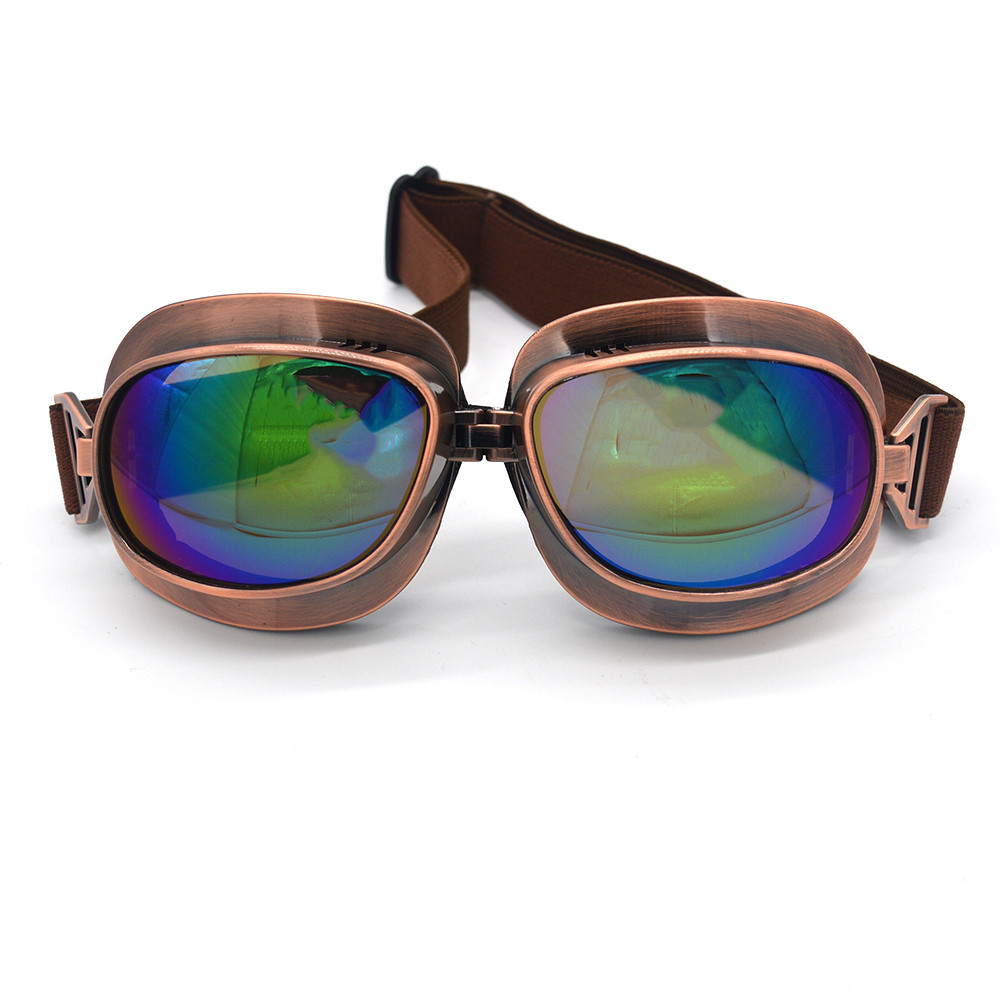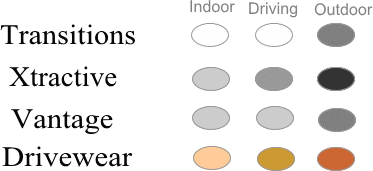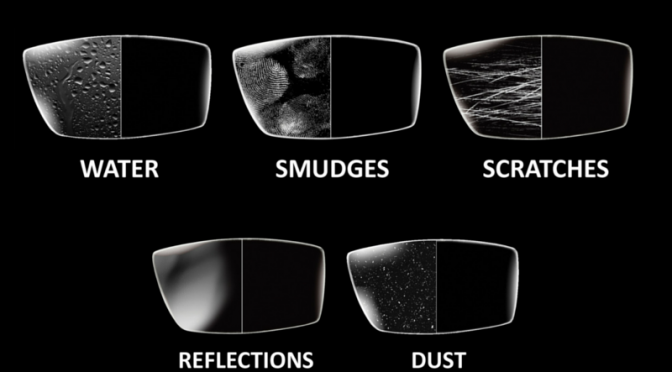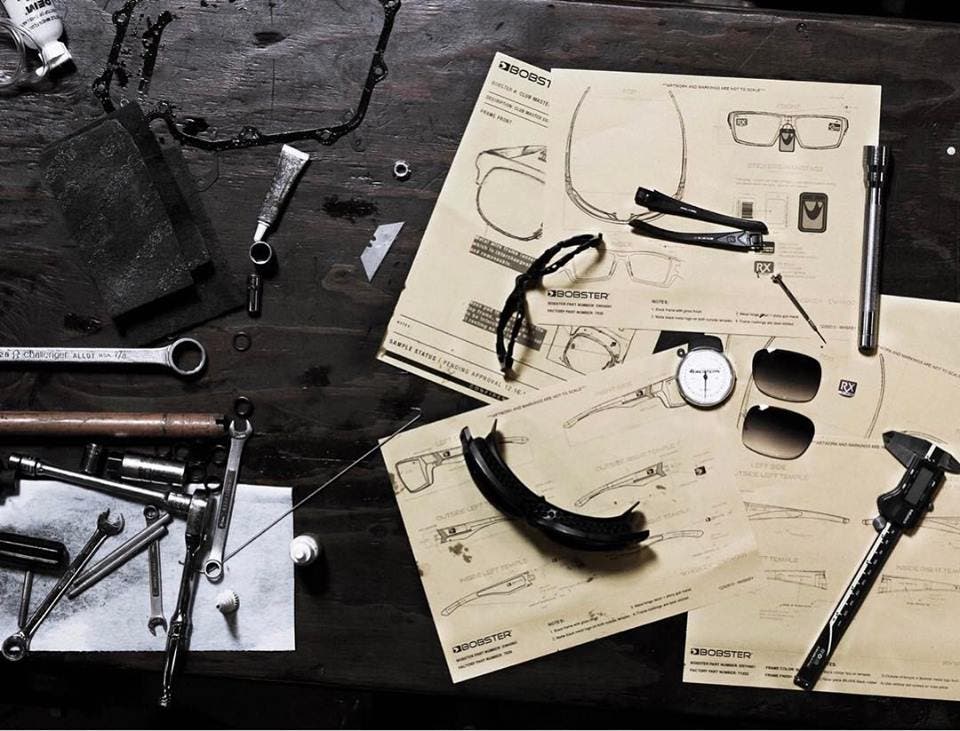MOTORCYCLE SUNGLASSES AND GOGGLES BUYER'S GUIDE
WHAT YOU NEED TO KNOW BEFORE BUYING MOTORCYCLE SUNGLASSES AND GOGGLES
When you're soaring down the open road on your motorcycle, your sunglasses or goggles are a necessary piece of equipment. Motorcycle sunglasses and goggles let you see unimpeded by the elements, so you can enjoy the road the way it was meant to be. That's why you need to get the right motorcycle sunglasses and goggles to give you comfort, durability, safety, and optical clarity. We know it can be confusing to know which are the best riding sunglasses and goggles, and if you need prescription, it's another battle entirely. That's why we're here to break down the guide to buying motorcycle sunglasses and goggles.
FRAME TECHNOLOGY
First off is the type of frame. You get different features with every brand and model, but here are the most important criteria to keep an eye out for.
GLASSES VS. GOGGLES
You'll need to decide whether you want glasses or goggles, and the best way to determine this is the type of helmet you have. A full face helmet typically requires glasses, as goggles can be too bulky to fit properly beneath a face shield. If you have an open face helmet, goggles have much more coverage to shield your eyes from wind and stay firmly in place.

COVERAGE
You'll also need to think about the coverage each frame provides. As open face helmets don't provide as much coverage, your goggles will need to be able to split the difference. This way, you'll get protection from wind, dust, or any other debris that could get in your eyes.
DURABILITY
Motorcycle sunglasses and goggles are more than a cool accessory or a fashion statement—they need to be durable in case you take a nasty spill or if debris flies up and hits the lenses. Look for sturdy construction and a frame made out of nylon or an injection-molded plastic, which gives the goggles more durability than you'd find in standard sunglasses. Safety ratings (such as ANSI) are also a guarantee of a durable build.
TEMPLES/STRAPS
Straight and slim temples fit best under a helmet—and when you get your sunglasses, test them under your helmet to see how comfortable the fit is. For long rides, you don't want your frames digging into the sides of your head. If you ordered goggles, check to see how the strap fits around the back and how easily you can remove them.
FOAM
When glasses come with face foam, we look at several factors, removable and replacable as well as whether the foam is open cell or closed cell. Removable face foam is a great feature to have if your ride is short and hot or if you're looking for sunglasses you can wear both on and off the bike. You also want the foam to be easily replacable, since it's going to get pretty sweaty and dirty after a while even though the sunglasses or goggles might still be in great shape. Along with that, open cell foam isn't as durable but is easier to replace, while closed cell foam, despite holding up longer, can be difficult to replace.
LENS TECHNOLOGY
A good frame is only half the battle—you need good quality lenses to enhance your performance. With us, you can choose between the following lens corrections in addition to the options listed below.
- Single Vision: Rx motorcycle sunglasses and goggles that only have one type of correction.
- Bifocal: Lined bifocal riding sunglasses and goggles have a distance prescription on the top and a reading prescription the bottom. SportRx sets the defined line especially low to make sure it does not interfere with your vision during your ride.
- Progressive: Progressive sunglasses and goggles provide distance, intermediate, and reading correction all in one lens!
IMPACT RESISTANCE
Your lenses need to be impact-resistant—avoid glass or plastic lenses as those can shatter easily. Instead, opt for polycarbonate or Trivex, both of which are shatterproof. You can also look for ANSI certification, which means your motorcycle glasses or goggles are as sturdy as they come.
LENS TINTS
There are several base lens tints to consider, each with their own advantages and disadvantages.
Clear tints are best for night riding or in heavily shadowed areas, plus you won't need to take off your sunglasses or goggles when going indoors. But if you're riding in bright sunlight, you're going to find yourself squinting.
Also consider yellow lenses for night riding, as they enhance detail and contrast in low light environments.

Meanwhile, grey lenses offer true to color perception to minimize distortions. These tints work best in bright, direct sunlight and are great for everyday wear. The downside is less contrast, so if you're expecting a rough ride, it might be harder to spot obstacles.
Brown and rose lenses offer that increased contrast you'll need to enhance your depth perception and perform at your peak, plus they have the advantage of working in most types of weather. On the other hand, if the sun is particularly bright, you might still be squinting.
TRANSITIONS
Transitions adapt to changing lighting conditions by darkening their tint as seen below. Wear these indoors and out, both day and night. If you're expecting a lot of long rides, Transitions are definitely worth it. We give a brief rundown of each type below.

TRANSITIONS SIGNATURE
The traditional Transitions lens, the Signature is completely clear indoors and at night, and turns a medium tint outdoors. While this fulfills the needs of most everyday glasses-wearers, the medium tint is probably not dark enough for athletes.
TRANSITIONS XTRACTIVE
Our top pick for motorcycling (or any outdoor activity), the XTRActive goes from virtually clear indoors to completely dark in the sun, becoming a true sunglass. It's the fastest and darkest of the Transitions, able to handle any lighting condition. You'll only need one pair of glasses to cover every function, so put these on and ride through the day and into the night!
TRANSITIONS VANTAGE
The Transitions Vantage goes from virtually clear to a medium tint outdoors, but what sets it apart from the Signature and XTRActive is that it becomes polarized when it tints.
TRANSITIONS DRIVEWEAR
The Drivewear lens is optimized for driving, changing from a lighter, olive-green tint to a dark brown one. Unlike the other Transitions, it changes both color and tint to protect against any type of sunlight. It's also fully polarized.
POLARIZED LENSES
Polarized lenses are great for blocking glare from shiny surfaces such as water or other vehicles, but can have a negative effect on depth perception and make it harder to read digital displays. If you like to ride on the freeway, by the ocean, or around other people, consider a polarized lens to improve your vision. Likewise, if you like to ride on dirt or at night, a polarized lens is unnecessary. You can learn more about polarized lenses by checking out our blog on that here.
MIRROR LENSES
Mirror lenses are a great option both for looking cool and improving vision on sunny days. By reflecting light away from the lens, you're able to see better in bright conditions, plus from the outside they appear as one-way mirrors for a cool aesthetic choice. However, you can't get mirror lenses with Transitions XTRActive if you were eyeing that option.
LENS COATINGS

ANTI-FOG COATING
An anti-fog coating on the inside of the lens helps to minimize fogging, which can be handy if you tend to sweat a lot or frequently ride in cold weather. Because this coating can't be applied with AR, however, we suggest focusing on a better fit and good ventilation instead of relying solely on that coating.
ANTI-REFLECTIVE (AR) COATING
An AR coating is commonly used on eyeglasses to make them look almost invisible and to deflect unwanted light. On motorcycle sunglasses and goggles, AR has the added benefit of reducing glare from headlights and roads.
HYDROPHOBIC COATING
A hydrophobic coating is usually used on the front end of the lens to repel water. This makes your sunglasses or goggles great for riding in the rain.
OLEOPHOBIC COATING
Like hydrophobic coatings, an oleophobic coating is usually included by the manufacturer. Oleophobic coatings are helpful to have since they repel things like dust and oil. They also reduce smudging from fingerprints.

Shop our complete line of Sunglasses, Goggles & Face Gear Here!